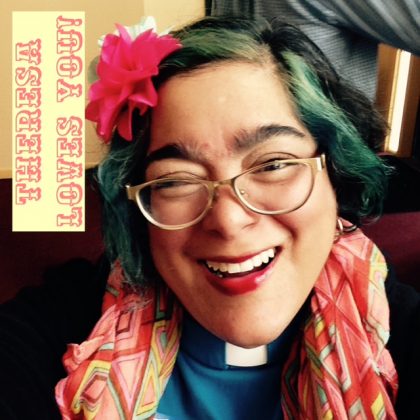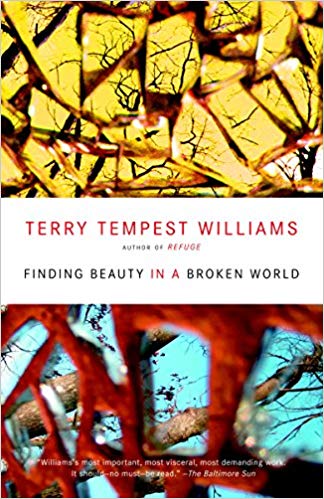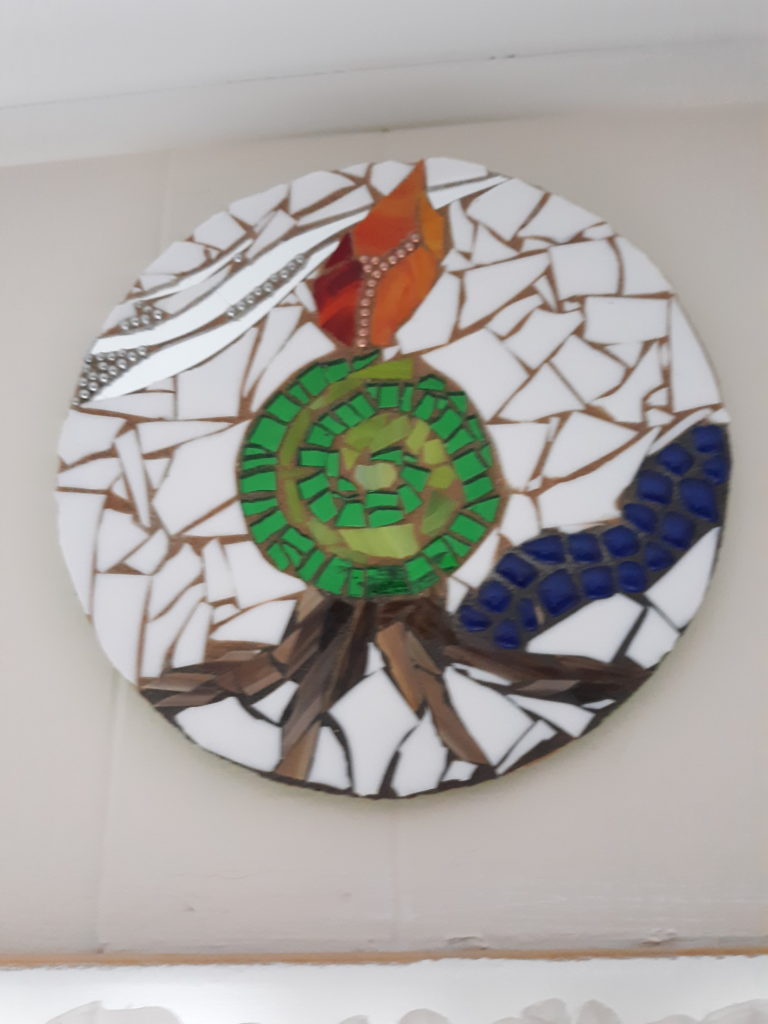Water Ingathering 2019
September 8, 2019
The Unitarian Society, East Brunswick, NJ


All of us need all of us to make it.
These are words from Reverend Theresa Ines Soto, the Senior Minister at First Unitarian in Oakland California.
All of us need all of us to make it.
No matter our shape or size, no matter the hue of our skin, no matter if our brains are neurotypical or not. Whether we are tall or short or inbetween. Young or once young. Old or gonna be old. Cranky, cheerful, skeptical, naïve – there’s room for you here. Not despite whatever it is that makes you you, but because of what makes you you.
What makes you you, makes us us.
Each of us, a part of the Beautiful Whole.
All of us need all of us to make it.

The author, environmentalist, and Mormon, Terry Tempest Williams wrote a book awhile back called, Finding Beauty in a Broken World. The last third of the book is about the unexpected complexity of prairie dog communities. The middle third is about healing after the Rwandan genocide. The first third of the book is about learning how to make mosaics.
She writes about a class she took from a master mosaicist in Ravenna, Italy. There she learned that the tiles used in mosaics are called “tessera.” She also learned the eleven classical rules.
Number one: The play of light is the first rule of mosaic.
Number three: Tesserae (the plural of tessera) are irregular, rough, individualized, unique.
Number eight: There is perfection in imperfection. The interstices or gaps between the tesserae speak their own language.
Number nine: Many colors are used to create one color from afar.
Finally, number eleven: The play of light is the first and last rule of mosaic.

Tempest Williams learns things in this class beyond how to make a mosaic. She learns classical history: the first mosaics were made in Mesopotamia, two and a half millennia before Jesus walked the earth, but died out as an art form. It reappeared in 9th century Greece, first made of pebbles, a cheaper alternative to carpet. Then, as cut stone became the primary material, the art form spread geographically: Greece, Turkey, Egypt, and those famous ones in Pompeii, buried under volcanic ash.
She learned other things. Wisdom that might be applied beyond making a literal mosaic. How it is not only interesting, but necessary, to have diversity of color, of texture, of shape, of size. How sometimes, it is not commonality that ties one tessera to another, but is the tension between them. That somethings, if we perceive them from too close, in distance or time, they appear messy or disjointed, perhaps even at odds. But with distance, there is a beautiful blending and belonging that was not, could not be, perceived close up.
Her teacher said, “A mosaic is a conversation between what is broken… Mosaics are created out of community.”
All of us need all of us to make it.
~~
This past summer, I took a mosaic class while I was in Santa Fe. I’ve placed what I made here for you to admire.

I, too, like Terry Tempest Williams, learned some life lessons from those hours in the studio. For example, there were times when I was frustrated at my own limits. The teacher used the tools with ease. When I used them, I was clumsy. Still, the teacher showed me how to use the tool; she never offered to do it for me—which meant that by practicing, I had to figure it out for myself.
I learned that there were two ways for us to turn large sheets of glass into smaller, usable pieces: the intentional precision of a pistol-handled glass cutter. Or using a ball-peen hammer and a thwack of force. Each method renders very different results, both of which are necessary. The beauty of our mosaics emerged from a mixture of precision and chaos, control and surrender.
As instructed when I registered for the class, I arrived with a design in mind. However, the further along I got—transferring the design from my imagination to paper, then to the wooden base — the less the mosaic looked like my original design. Vision is essential, but I had to hold mine loosely so the final project could reveal itself to me along the way.
Here is the wisdom I gleaned from this class, different from Terry Tempest Williams’:
As much as you can, surround yourself with skillful teachers, no matter what you are learning. Let them teach you. But don’t let them do it for you. That learning is yours to do.
Respect the fragments and shards, whether they’re multi-hued glass or your life’s own story. Yes, they offer the occasional sharp cut, but they can offer also beauty and new ways to perceive the world.
Resist the urge to fully map out the future. Instead, cultivate humility and a capacity to trust. Know that there is a bigger picture out there, something bigger than any one of us, and we can connect with it, hitch our tent to it, and discover unexpected beauty.
~~~
Terry Tempest Williams wrote,
“Mosaic celebrates brokenness and the beauty of being brought together.”
May you get through this life, not unscathed, but with all your broken parts available for you to piece together into a beautiful whole.
May we all.
All of us need all of us to make it.
Amen. Blessed be.